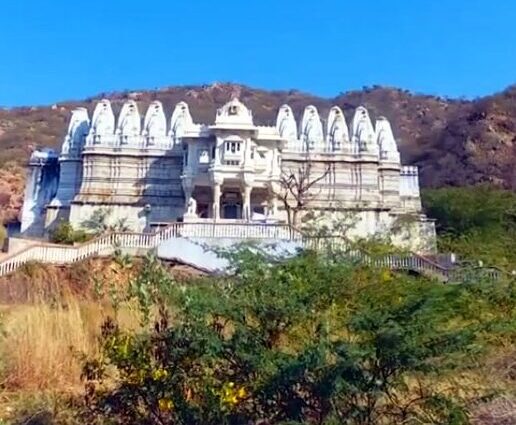Udaipur To Mirpur Jain Temple
Mirpur Jain Temple is one of the famous temple dedicated to the 23rd Jain tirthankara, Bhagwan Shri Parshvanatha built by Samprati Raja.
Mirpur Jain Temple is known one of the oldest marble temples of Rajasthan, thought to be built in the 9th century AD during the rule of a Rajput kind. The ancient art of this temple served as a model for the later Dilwara and Ranakpur temples. The main temple with its mandapa is standing, high on its pedestal with carved pillars and engraved parikrama representing every aspect of Indian mythology.
Mirpur Temple was built in the 9th century AD, during the reign of the Rajputs. It is assumed to be the oldest structure made of marble in Rajasthan. The architecture of this temple resembles that of Delwara and Ranakpur temples. It is devoted to the 23th Jain Tirthankara, Lord Parshvanath. The temple was destroyed by Mahmood Begda in the 13th century, but was reconstructed in the 15th century.
200 years back several idols were distributed from Mirpur Jain Temple and one of the idol of Shri Godiji Parshwanathji idol was given to Seth Shri Motishahji for world famous Shri Godiji Parshwanath Paidhuni Jain Temple, Mumbai.
In year 1904, Seth Kalyanji Parmanandji Pedhi Sirohi purchased the land around the temple from Nandiya rulers and since than Pedhi has been managing the entire Mirpur Jain Temple.
New Pavapuri Jain Tirth of Sirohi is located at 10 km distance from Mirpur Jain Tirth.

Mirpur Jain Temple was built in the 9th century AD, during the reign of the Rajputs. The Mirpur temple is generally thought to be the oldest marble monument in Rajasthan. It is devoted to the 23rd Jain tirthankara, Pārśva. The temple was destroyed by Sultan Mahmud Begada in the 13th century, and was rebuilt and renovated in the 15th century. The main temple with its mandapa, is standing high on its pedestal with carved pillars and engraved parikrama representing every aspect of Indian mythology. The temple has inscriptions which date back to 1162 AD in the temple mentioning history of Hamirgarh. There are seven inscription dating back from 12th to 15th century and latest inscription dating backing to 19th century.
There is an inscription stating that this temple was built by King Samprata. There is a reference that this temple was renovated by Shri Samant, the disciple of Acharya Jayanand Surisvarji. The remains scattered over here reveal that this was a large city in the past. The ancient sculpture of this temple reminds one of Abu, Delwada etc. The artistry displayed on the summit here surpasses even that of Abu. This temple is also mentioned in the ‘World And Encyclopedia of Art’. This is the birth-place of Shri Parshvachandrasuri Maharaj Saheb, the founder of Parshvachandra gachchha. A fair is held here every year on the tenth day of the dark half of the month of Magasar.
Art & Sculpture
The art of this place is matchless. The sculpture of domes, arched gates and pillars in nearby are thousand years old. The carving of elephants in the temple which seems to be the best work of art of the times of Pallav. The figures of yaksha, gandharvas, gods and goddesses all around are very well carved. The ever-peaceful atmosphere of this lonely place is very beautiful. Its natural beauty of the scene of sun-set in front of the temple is spectacular.

